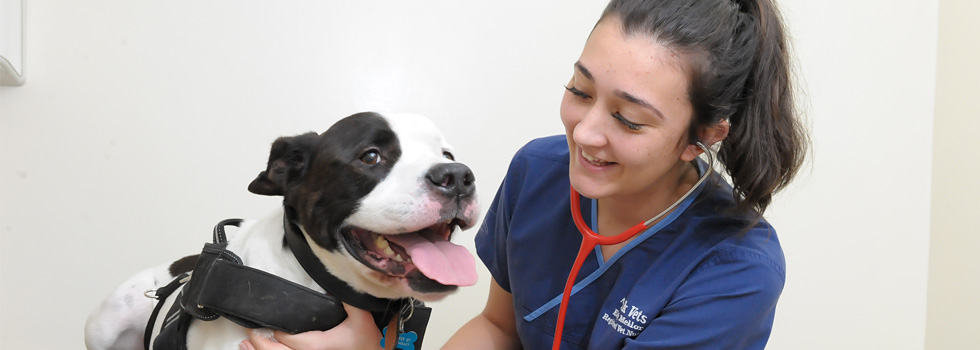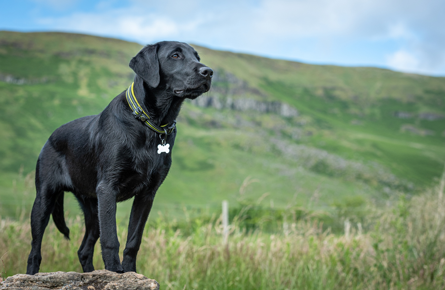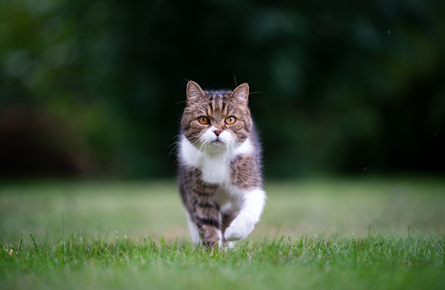Pet Microchipping
In the UK, all dogs are now required to be microchipped, and their owners are required to have up-to-date contact details. We also recommend microchipping your cats to make it more likely that they will be located if they go missing, while dogs are not subject to this rule.
This regulation seeks to decrease the number of stray animals while also promoting responsible pet ownership and facilitating the identification of an owner in an emergency. It's also critical to keep your contact information current in the microchipping database since inaccurate information might make it more difficult to return your pet safely.
Book a microchipping appointment
What Is Pet Microchipping?
A tiny chip, about the size of a rice grain, is inserted beneath your pet's skin as part of the permanent identification process known as microchipping. This short and extremely painless technique allows your pet's unique identification number to be read by a portable scanner.
These scanners are available to most vets, including our clinic at Peak Vets, as well as rescue groups and regional government offices. It is easy to call and reunite lost pets with their owners since the identification number is linked to your contact details on a central database.
Each microchip has a code unique to your pet. After implantation, the national microchipping database is updated with your pet's identification and contact details. Finding lost pets and returning them to their owners requires keeping up-to-date contact information.
Which Animals Should Be Microchipped?
In addition to being strongly recommended for cats, rabbits, and other pets, microchipping dogs and puppies by the time they are eight weeks old is legally needed for the transfer of ownership.
Be aware that failing to microchip your dog might result in a fine of up to £500. Pets going abroad must also be microchipped and acquire an Animal Health Certificate.
Book a microchipping appointment
Pet Microchipping at Peak Vets
No anaesthetic is required because the procedure is not very unpleasant and may be performed on a routine visit. whether you're unsure, our experts can swiftly scan your pet to see whether they already have a microchip.
Prior to your information being entered to the national database for microchipping, you must complete a registration form at Peak Vets. The cost of the treatment includes the registration charge, which is good for the rest of your pet's life.
Since all of the microchips used at Peak Vets adhere to International Standards (ISO), dogs travelling under the Pet Passport program may be sure that their microchips will be read by scanners abroad.
For additional information or to schedule an appointment, contact the Peak Veterinary Clinic in your area. Our friendly team is happy to assist.
Why Choose Peak Vets For your Pet Microchipping
A vital decision that will guarantee your pet's protection is choosing a veterinarian to microchip them. At Peak Vets, we take great satisfaction in providing a trustworthy, informed service that puts your pet's health first. We make the process easy and stress-free for you and your pet because of our skilled staff, premium microchips, and all-encompassing assistance. Peak Vets offers reliable treatment and peace of mind whether you're microchipping a dog, cat, or rabbit or getting your pet ready for travel.
Here at Peak Vets we aim to provide you with:
- Professional veterinarian personnel and amiable customer support
- Complete assistance during the microchipping procedure for your pet
- Microchips that adhere to international standards by being ISO-compliant
- Microchip checking services to prevent duplication and enable repeated checking
- A welcoming and trustworthy experience when you get in touch with and come see us at Peak Vet Sheffield
Book a microchipping appointment
Frequently Asked Questions For Pet Microchipping
What Is A Microchip?
A microchip is a tiny implant that is about the size of a rice grain. After being microchipped, your pet will sit beneath the skin and send a bar code number to the scanner when scanned.
YOUR PERSONAL INFORMATION IS NOT CONTAINED IN THE MICROCHIP.
What Does Pet Microchipping Involve?
The process of implanting a microchip is straightforward and involves inserting the tiny chip beneath your pet's skin using a syringe. Our veterinarians or nurses are capable of doing this. On a form, you provide personal information about yourself, your pet, and—above all—your contact information. After receiving this form, our microchip company uses the data to register the chip we placed. We will also send copies of your pet's unique microchip number for your keeping.
Why Should I Microchip My Pet?
As of April 2016, all canines older than eight weeks must be microchipped in the UK. Most importantly, microchipping lets you prove that your pet is yours. Animals brought in as strays are often scanned by veterinary clinics and rescue groups. Instead of being strays, these animals are often cherished pets, and if they are microchipped, the worried owner may be promptly found and reunited with them.
Is Microchipping Permanent?
In general, the response is yes. Once placed, the chip will remain under your pet's skin. Often, the chip will move from its initial injection site. Professionals know this and will utilise the microchip scanner to look at the whole animal! Please be advised that a microchip may come out after injection. This is really unusual. Peak Vets in Sheffield can replace your pet's microchip at no extra cost if it cannot be found after it has been installed.
Can All Pets Be Microchipped?
The majority of pets, even bigger birds and tortoises, may be microchipped. Please get in touch with us if you're not sure whether your pet can be microchipped, and our experienced staff will go over your best alternatives.
What Happens If I Move To A New House?
Every time you move, you have to change your contact details with your Microchip company. Peak Vets can provide you with a phone number to contact and update the information in your veterinary file.










